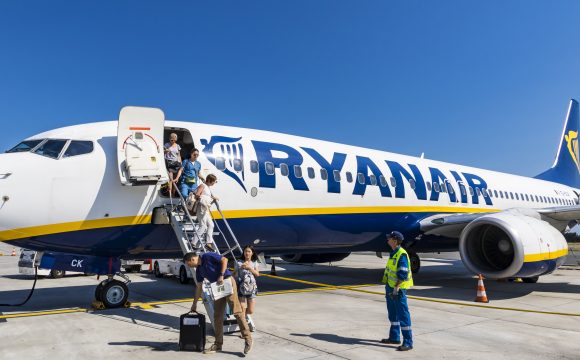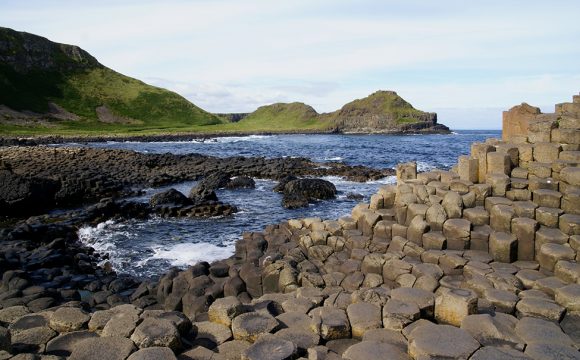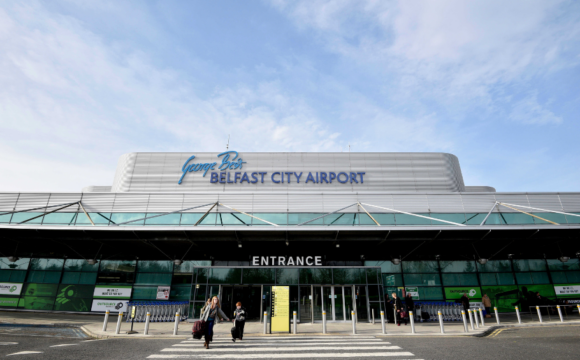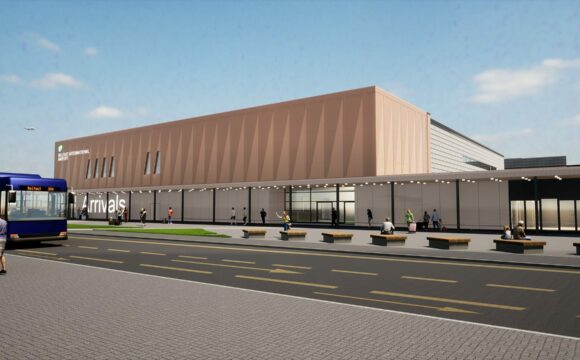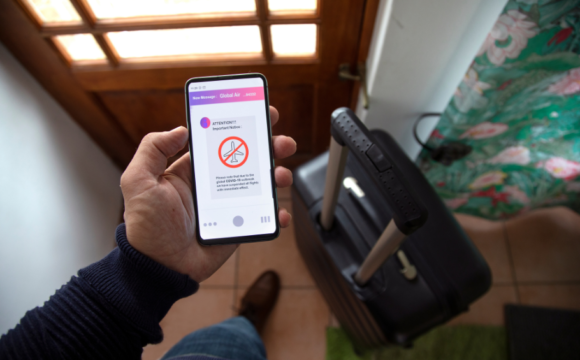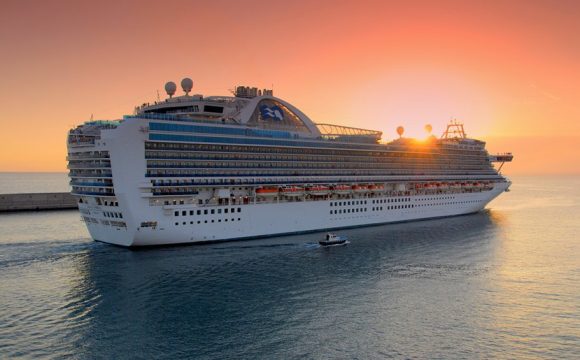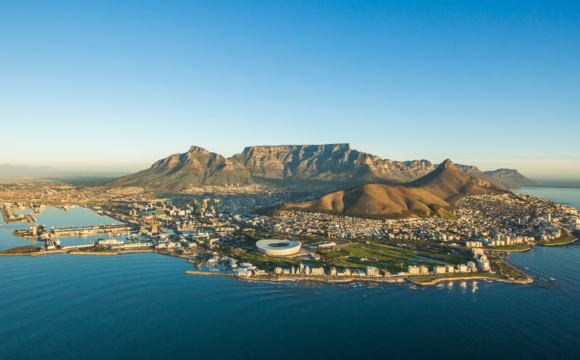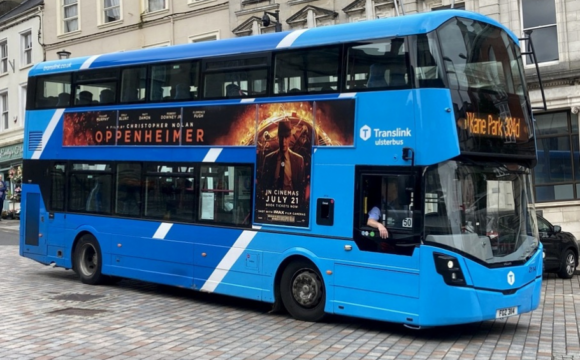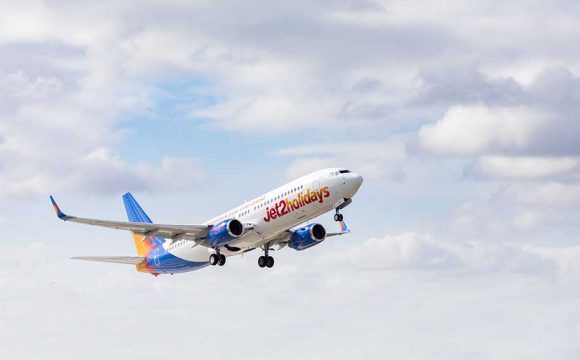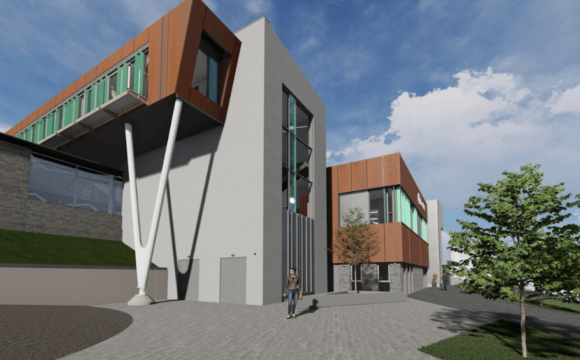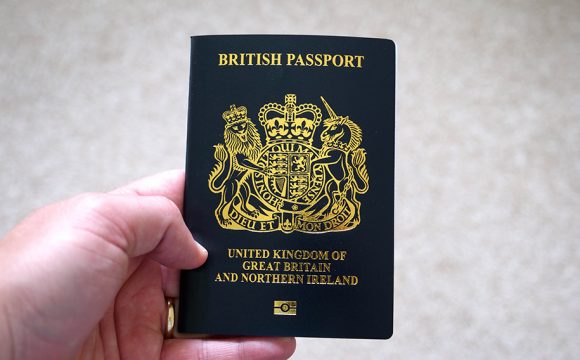D-day June 6, 1944 is one of the most significant dates affecting the history of Northern Ireland, so it is surprising — and somewhat shameful— that this month’s 75th Anniversary of the Normandy Landings has not been exploited better here for its international tourism potential. I cannot find much in the way of celebrations here — in spite of the fact that this wee Province played a pivotal role in the Allied victory over Hitler’s obnoxious Third Reich.
Even at UK level, there seems to be a governmental reticence to celebrate such an historic landmark properly. There’s not a lot of tourism activity, nationally, apart from special events in Portsmouth (main port for D-Day departures) and London. Ironically, the Thames-located HMS BELFAST, which was built in Harland & Wolff (by shipyard workers including two members of my wider family who were later killed in the Blitz), is hoping to boost her annual quarter-million visitors total with new topical exhibits.
Her first-hand experiences on D-Day included heavy bombardment of German artillery defences. I have a feeling that the whole Brexit fiasco has poisoned relations with our European neighbours to such an extent that our Government has somehow become reluctant to remind them that it was the United Kingdom which saved the rest of Europe from Nazi domination — including persuading the USA to abandon isolationism and join us in a righteous crusade. In France, the attitude could not be more contrasting; the 75th Anniversary is now being exploited with world-class events in Normandy starring the US President and other world leaders. Festivals on appropriate themes are being held in summer resorts I know well along the famous Beaches.
I have often written here in TREW’S TRAVELS about our favourite family destinations along the Cotentin Peninsula I have travelled with my wife Karen, starting from the Irish Ferries port of Cherbourg, along the coast and hedgerows to Caen, Cabourg, Carentan — and those are only the ones starting with C! Almost all of the German blockhouses have been converted over the last 75 years into Musées des Debarquements, surf shops, seafood restaurants or fast-food outlets packed with what are often described in professional tourism development literature as as ‘Battlefield Tourists’.
We deserve to get our fair share of this lucrative market, which is largely American. Look at the US cruise passengers who arrive here in their tens of thousands nowadays! Many of them will have fathers and grandfathers who served here. I have a feeling they are not even informed about such appropriate attractions as our excellent dedicated visitor attraction, the NI WAR MEMORIAL in Talbot Street near Belfast Cathedral. Among its eye-opening exhibits, it has a Hall of Friendship marking the Special Relationship between Britain and her closest ally, America, with unique friezes illustrating this theme graphically. Included in its publications list is the enlightening volume by my old friend of yesteryear Ian Wilson — So Vast an Armada: From Belfast Lough to D-Day. To discover the significance of this little book’s strapline, read on… (By the way, I bought this through Amazon which I only do when local bookshops don’t stock what I want) Exploiting That Special Relationship With USA AMERICA’S nearest transAtlantic ally in WWII was, of course, Northern Ireland.
Geography dictated in 1942 that our wee country should be identified as the ideal strategic springboard for the US Army, Navy and Air Force to prepare for the Allied Invasion of Europe. This decision changed Ulster life forever. The American GIs came here in such numbers during the following three years — more than 300,000 — that their benign presence became known as the Friendly Invasion. By mid-1944, American infantrymen accounted for 10 percent of our total population. In lowly-populated Fermanagh it was 20 percent — so it’s no wonder that so many of its girls were among Ulster’s 1800 GI brides!
First GI to set foot in Ulster — indeed, in the whole European theatre of war — was the handsome Minnesotan, Private First Class Milburn H Henke (24), who came down the gangplank at Dufferin Quay, Belfast, on a freezing late January day in 1942. He was greeted by dignitaries and the Press as the First American Over Here, even though hundreds of GIs were already marching past him to the music of the Royal Ulster Rifles band— which is clearly audible on his BBC Home Service archive interview! However, he became famous all over the world, and Northern Ireland was firmly put on the WWII map. Half a century later, in 1992, I actually met Milburn “Call me Dink” Henke (74) at the 50th Anniversary of US troops first arrival here, when the Northern Ireland Tourist Board hosted a Press Conference for him. In those days, our pro-active tourist board and local councils were keen to promote anniversaries like this, particularly to Americans who loved WWII Battlefield Tours (in the way thousands of young travellers adore Game of Thrones Tours today).
Over the years I have met a score of US Military Reunion groups and families spending tourist money here — from Battle of the Atlantic ex-pilots reminiscing in Castle Archdale, Co Fermanagh to ex-Marines enjoying their former Officers Mess in Londonderry, the Beech Hill Country House Hotel, which still gets annual visits from parties of present-day Marines on furlough. Dink Henke told me back in 1992: “I was just lucky to become the symbol of America sending its boys to Europe to help win the war. I loved my seven months of peace and training here — much better than anywhere else I served in Europe! It was way better than Italy where I won my Silver Star the hard way or North Africa where my back was fractured! ”. He invited me to come to Henke’s Café, his family’s diner in Hutchinson, Minnesota, to have a piece of their famous apple pie.
I politely reminded him that he was in Belfast to promote Northern Ireland as a tourism destination — not the other way round! Throughout their 1992 tour of his wartime training locations and billets, Dink and his wife Lola were followed by UK and US media creating useful TV and Press coverage of Derry’s Walls and the Causeway coast in particular. The couple returned in 1994, Fiftieth Anniversary of D-Day, to attend the rededication of the American War Memorial in the grounds of Belfast City Hall (known to Belfast veterans as ‘The Shaving Stick’ as it resembles the cylindrical bars of soap used for wet shaves in olden days (ie my teens). Supreme Allied Commander DWIGHT D EISENHOWER, made a speech that summed up our vital WWII importance in one sentence. He proclaimed to the world: “Without Northern Ireland I do not see how the American Forces could have been concentrated to begin the invasion of Europe!”
He is also responsible for making another stirring speech within hearing distance of my home close to the seafront in Bangor, though I have to admit that it was made before I would have been interested in his motivational message about the coming invasion, as I was just a toddler back in the early summer of 1944, with my parents still in mourning for family victims of the Blitz and Dunkirk. That means the speech was made exactly 75 years ago today — the day I am delivering this column, May 20! General (later President) Eisenhower visited the mighty D-Day Armada of ships that had steamed from all corners of the Free World to Belfast Lough; most were anchored in Bangor Bay. Eisenhower went on board a number of American warships that had been making last-minute preparations off the popular resort, for the invasion less than three weeks later on the fateful Sixth of June.
He joined USS Baldwin and circled the USS Arkansas and USS Nevada anchored off Ballyholme Beach. He then gave a rousing speech on the loudspeaker aboard the WWI veteran battleship, USS Texas near Bangor Harbour, to hundreds of crewmen and guests from Allied ships. I have overheard elderly Bangorians claim they could hear the rousing speech from the packed North Pier in the town, which was appropriately re-named Eisenhower Pier in 2005, The pier walls are enhanced by Ulster’s finest civic mosaics, illustrating the town’s role in WWII— created by my ceramics tutor and friend, Marty McClure! Follow the GI Trail This Summer BY FAR the best way to get out and experience Northern Ireland’s fascinating WWII story, is to get a copy of a FREE GI TRAIL folder from your nearest TIC in the three areas they cover — Armagh and Down, Fermanagh and Londonderry, Antrim & Tyrone.
You can use the waymarked maps on summer weekend car-trips; they include sat-nav postcodes, but most of the sites are in public places and are easily found. Inevitably in such an undertaking, some WWII American sites are missing from the lists on the folders which were prepared thanks to money from Lottery Heritage Fund in 2015. For example, MONTALTO HOUSE and ESTATE near Ballynahinch was only recently fully opened to the public, so its connection to the US Military is not covered in the local GI Trail folder As I revealed in my enthusiastic review of Montalto in January TREW’S TRAVELS, American troops were billeted in and around the Estate and Montalto House was used as their local HQ. Between 1942-44 this private gated estate became a secret D-Day training ground. Many of the concrete roadways which the US soldiers constructed for their Jeeps and armoured vehicles, are still in use by today’s tourists and wedding guests. Among other sites in the east of NI which are ideal for summer visits are the Nautilus Centre in Kilkeel which is where the GI Trail is administered; Newry and Mourne Museum; the Somme Centre and Down County museum where a GI is on permanent guard!
Also check out The Argory (National Trust), Brownlow House; Grey Point Fort; and Ulster Aviation Society at Long Kesh Airfield. For proof of the sacrifice these young men made for our freedom from fascism, make a visit to the former LISNABREENY US MILITARY CEMETERY, on the scenic Rocky Road among the Castlereagh Hills, Belfast BT8 2GA. Five years ago, Castlereagh Council erected an memorial obelisk of Mourne granite, naming all of the 148 US military personnel who were buried there between 1942-48. Nearby Lisnabreeny House was a WWII base for the US Army; it is nowadays on the site of our first integrated school, Lagan College.
FlowerBed & Breakfast goes on show in Bangor
Bangor Castle Walled Garden is the colourful setting for the annual ForM Sculpture Exhibition, running for the whole month of June this year. It is trewly a great destination for an early summer family excursion, I promise! Regular readers know that I am a leisure ceramics student at SERC Bangor and I am honoured to have had sculptural works accepted for the past two years for display in the main garden area of the ForM sculpture trail… In spite of being allocated a space this year in the out-of-the-way Bandstand area, I am exhibiting my strongest-ever piece, entitled FlowerBed & Breakfast.
This comprises a Giant metal frying pan containing more than 60 handcrafted Ulster Fry specialities arranged on a floral theme (NOT as shown on this first-attempt photo on my studio floor). FlowerBed & Breakfast represents three of my passions — tourism, gardens and ceramics — incorporated in an artwork which celebrates the heyday of Bangor B&Bs when landladies attracted tourists with fantastic floral displays and amused them by calling a huge breakfast a WEE Ulster Fry!


